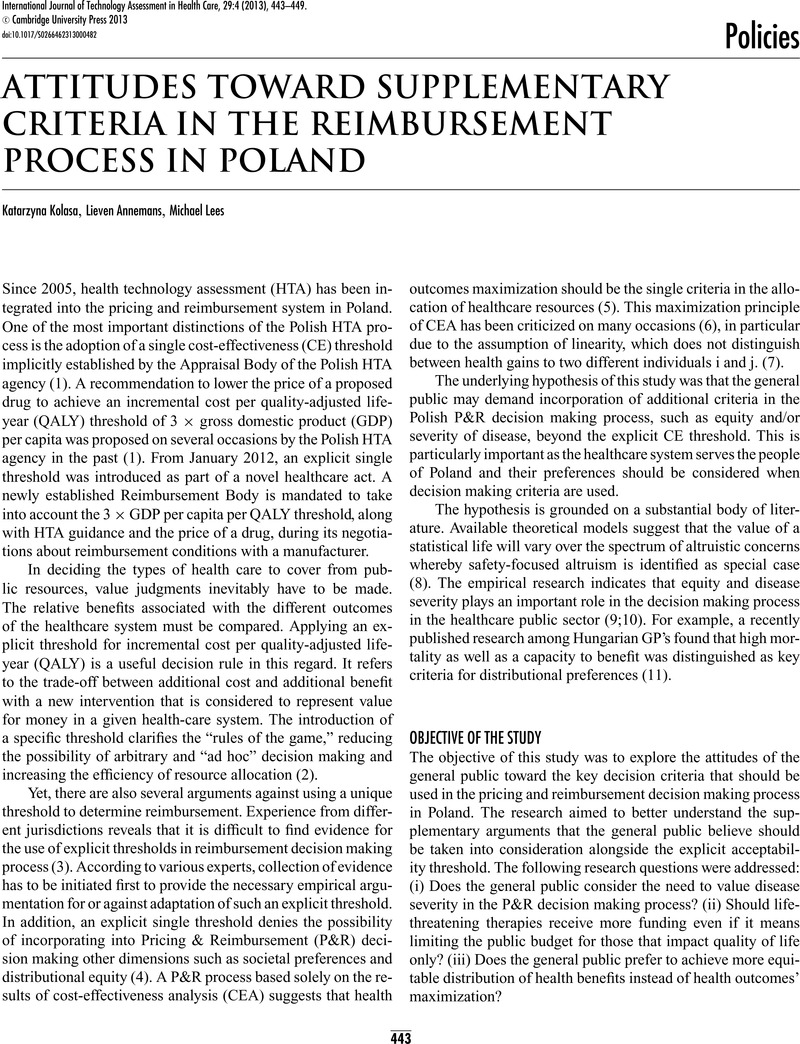Crossref Citations
This article has been cited by the following publications. This list is generated based on data provided by Crossref.
Kolasa, Katarzyna
Dohnalik, Jacek
Borek, Ewa
Siemiątkowski, Marek
and
Ścibiorski, Cezary
2014.
The paradox of public participation in the healthcare in Poland – What citizens want, and what they think.
Health Policy,
Vol. 118,
Issue. 2,
p.
159.
Kolasa, Katarzyna
2014.
Are pricing and reimbursement decision-making criteria aligned with public preferences regarding allocation principles in the Polish healthcare sector?.
Expert Review of Pharmacoeconomics & Outcomes Research,
Vol. 14,
Issue. 5,
p.
751.
Kolasa, Katarzyna
Kalo, Zoltan
and
Zah, Vladimir
2016.
The use of non-economic criteria in pricing and reimbursement decisions in Central and Eastern Europe: issues, trends and recommendations.
Expert Review of Pharmacoeconomics & Outcomes Research,
Vol. 16,
Issue. 4,
p.
483.
Kolasa, Katarzyna
Zwolinski, Krzysztof M.
Kalo, Zoltan
and
Hermanowski, Tomasz
2016.
Potential impact of the implementation of multiple-criteria decision analysis (MCDA) on the Polish pricing and reimbursement process of orphan drugs.
Orphanet Journal of Rare Diseases,
Vol. 11,
Issue. 1,



